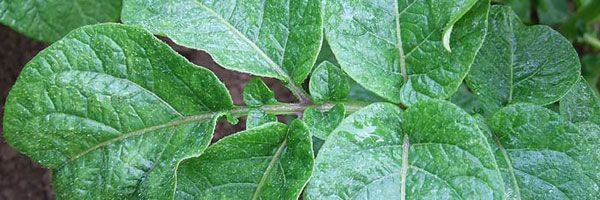
Potato virus X
(PVX)
- Causal agent and transmission
Potato virus X is a member of the Potexvirus group with a world-wide presence in potato growing areas.
Transmission of PVX to potato plants occurs mainly by contact. PVX is transmitted mainly mechanically, through contact between the plants subjected to friction (wind, machines, man, animals, etc.). In practice, most infections are transmitted by farm machinery - such as sprayers or tractors - passing through the crops. In fact, PVX is very contagious by contact as it is highly concentrated in plant tissues and its stability in the sap is rather long (thermal inactivation point between 68°C and 76°C, dilution end-point between 105 and 106 and infectivity retained at 20°C for several weeks)
Transmission by vectors such as grasshoppers or biting insects has been reported but seems limited compared to transmission by contact.
The host range of PVX is mostly limited to the Solanaceae, although some plants are susceptible in other families, e.g. in Amaranthaceae and Chenopodiaceae
- Significance!
The incidence of PVX on potatoes is usually low as PVX infection causes mild mosaic symptoms and yield losses are limited between 10 and 15%. However, in the case of co-infection with other viruses, the effects of PVX are much more severe.





